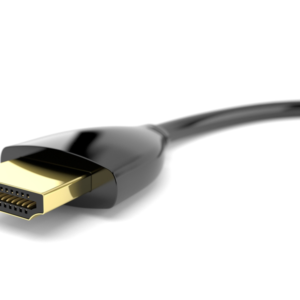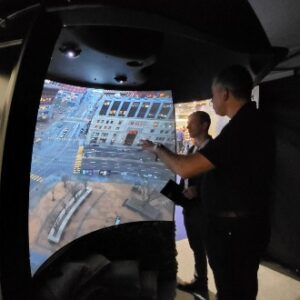On the latest episode of AVWeek, the staff of AVNation and several notable voices in AV took a break from industry news to discuss race in AV and what measures can be taken to support greater diversity across the channel
As groups across the United States and the world continue to protest and call for systemic changes to governance and policing in the wake of the murder of George Floyd in Minneapolis, Minnesota, at the hands of police, we at AVNation felt that, as a media platform, it was important to address not only the question of diversity in our own industry, but how the growing call for systemic reform can be carried out within our ranks.
On the latest episode of the weekly podcast, AVWeek, Tim and I are joined by AVIXA’s Dave Labuskes, Verrex’s Charmaine Tourella, LoopLab’s Chris Hope, Giovanni Agramonte of ArtMedia Group, and Iffat Chaudry from the UK’s CDEC, to discuss our own personal experiences of race in the AV industry as well as how as individuals and within working groups, such as AVIXA’s Diversity Council, we can effect sustainable change that reflects equality and genuine diversity in our channel.
What can AV organizations do to address the issue of racism and race relations within their industry, but also within their communities?
“I try to reflect on the fact that it’s a difficult week for me, but not a difficult life for me,” Labuskes says during the opening question of the episode. “And that this is a conversation this week, or these last couple weeks, that we need to have more. I spent a lot of time over the years actually to try to figure out, what can an industry association or more specifically, what can the industry association that I’m the CEO of do to confront these issues? I also have a background, as you mentioned, of technology and coding and stuff. I tend to try, in my head, to break complicated problems down into small pieces.”
Labuskes acknowledges that this approach might be impossible with the scale of systemic racism and on a microlevel, the implicit bias that dog so many interactions with people of color when engaging on all aspects of society.
“I think putting those types of gathering places, whether they’re online or in place, in reality, allows a conversation to start,” Labuskes adds. “Then that conversation can inform further conversations, and people can get… We can’t solve implicit bias, but when can contribute to people connecting with each other, learning from each other, as you talked about at the outset here. And recognizing their faults, learning where they’ve made assumptions that are wrong, and moving forward from that point.”
Tourella, underscoring her 20 years in the industry, observes that the adversity to diversity within AV is really about how comfortable and holistic the channel is, having been founded and rooted in the mom-and-pop approach to business development, which means hiring the people they know and are most familiar with.
“For a long time, holistically, they hired people they worked with, they’re on the road with. It was a family affair, so the family got involved,” Tourella notes. “They siloed themselves and never looked out. In not looking out, they missed out on a lot of the diverse talent that actually had the ability to propel their businesses much further. Because fast forward to today, a lot of the diverse AV workers are on the client side because they couldn’t get satisfaction on the AV side. A lot of those people went to, “Okay, I’m going to go to the client side because they appreciate me there and my diversity. They have a diversity plan and initiative, and I get paid more, and I get stock options. Screw AV, bye. I’m going there, or I’m going to the manufacturer’s side where it’s the same.
“What we have to do is we have to start outreaching. The outreach in the AV industry with a dominant group, which typically usually is older white men are the dominant group in our industry, have to now take the mantle of looking up ways to implement strategies. Sometimes it’s a plan, but really what we have to do is have a cultural shift in the AV industry to make diversity a thing that’s positive. Because you can do it a couple of ways.”
Tourella suggests that the AV industry focuses on a cultural shift through positive actions — events, programs, training, education and outreach — to bring greater diversity to channel and stop the brain drain of talent that has decamp for IT or client-facing organizations.
To Tourella’s point, Chris Hope adds representation in simple, straightforward ways such as adding people of color in the industry to corporate and company AV integration tutorials can have a great impact. But he poignantly adds that diversity is not the same as racial justice.
“I would say though, when we’re talking about the situation that’s happening nationally and locally with the protests, diversity isn’t really… it’s just one part of it,” Hope says. “Racial justice is not diversity, right? Diversity means variety. Racial justice is not equality, equality is just sameness. Really, at the root of what we’re dealing with here is equity, fairness, justice. For us at The Loop Lab, we are really centered in the principle that all people are deserving of liberty, justice, and dignified labor. That they have the ability and should have the access to dignified labor if they work hard and they really want to pursue pro AV as a career choice, they should have access to do so.”
As this moment in history continues to shed a glaring light on the inequalities in the U.S. and moves many organizations and outlets in power to amplify the voices and labor of people of color, Hope like many of us, is hopeful that conversations about reform stay alive once the protests end.
“We have to really talk to key level executives in why it’s important to be proactive,” Hope says. “And making sure that their corporate environments are promoting and coming at it from a racial justice framework. That can be done as simple as having people that get paid to do that kind of consultancy, to do trainings.
“It has to be constant, it has to be an investment. It has to be something that the company says, “We see the benefit in this and what it does to our employees.” The data has to demonstrate that, right? Numbers don’t lie. If you see over a period of time the number of people of color that are employed not going up, and in fact maybe decreasing in some places, then you can’t say that you’re really invested in racial injustice and equity. I think there’s a lot of work to be done, as already been shared, but there are many ways that folks can get engaged and involved, particularly in the pro-AV space.”
Later in the discussion the panel returns to actionable changes that can bring greater diversity to our industry.
“David and I actually had a meeting a few weeks ago about this as it pertains to the missed opportunity in not opening up the doors to diversity for the AV industry,” Tourella says. “And how we have to better work, it’s a work in progress, and it’s got to continue. But we have to be more diligent about application. It’s all about application. It’s collaboration and application.
“That’s also on us and our community as well,” Tourella continues. “We are tired of talking, like I said before. However, there’s a crack in the window and a crack. There’s a crack that we have to start opening up a little bit wider. We see the crack. We’re here on this show, we see the crack. We have to take the opportunity more to step through and talk to you, and let you know what we need to see, what we need to have. How, and also not just tell you, but help you on how it can be done and show you. And kind of help to collaborate together, to pull that strategy and application along so we can actually make applications that we can apply to see results, because that’s what it’s going to take.”
Listen and watch the full discussion on AVWeek 459: Race & the AV Industry here.










Job well done – thank you for taking the initiative and for taking part.